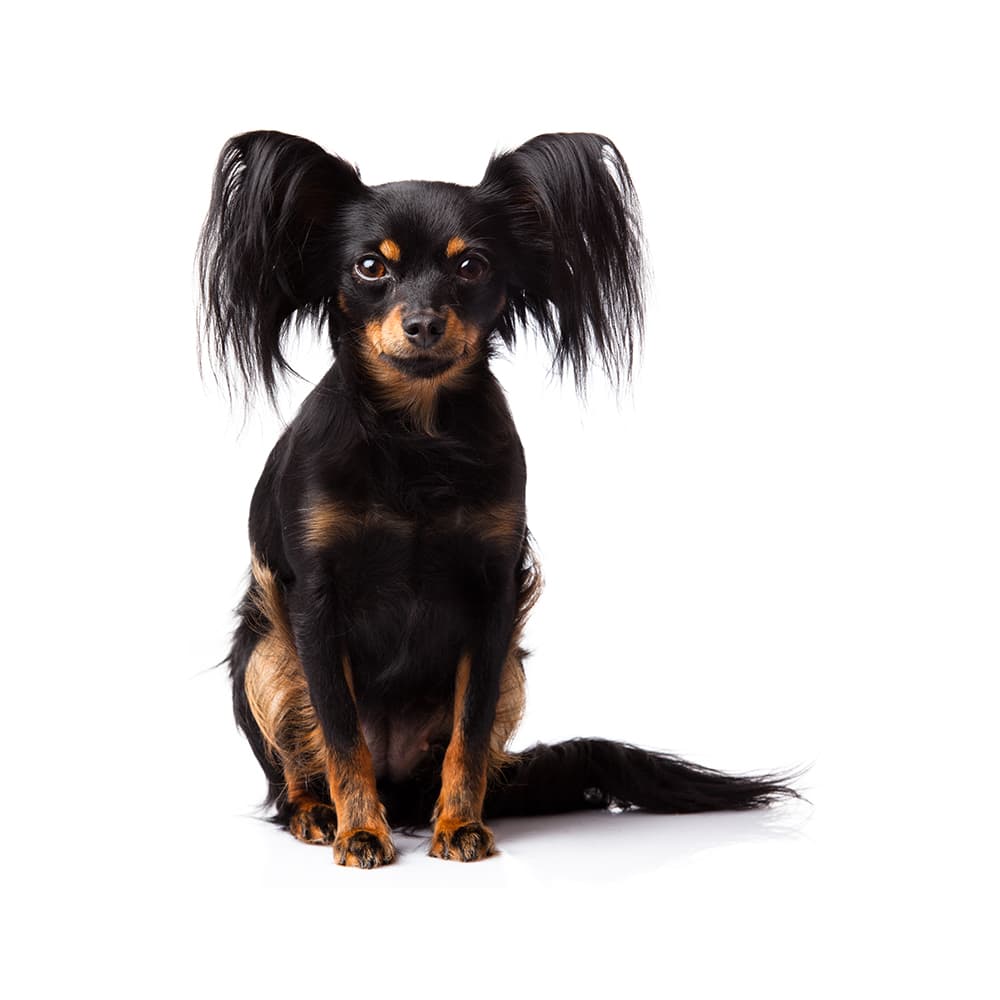Discover your dog's connection to this breed and 200+ others


Discover your dog's connection to this breed and 200+ others



The Russian Toy, also known as the Russkiy Toy or Moscow Toy Terrier, is a small, elegant, lively dog breed known for its friendly and intelligent disposition. Despite its size, the Russian Toy is a hardy and vigorous breed. The history of the Russian Toy is quite recent compared to many other dog breeds. The breed was developed in Russia during the early part of the 20th century, primarily as a companion animal for the Russian elite. The breed's ancestors are believed to be the English Toy Terrier, which were popular among Russian nobility. However, the Russian Toy breed almost became extinct during the period of the Soviet Union, with the English Toy Terriers in the country being bred without any selection or attention to maintaining breed standards. After World War II, very few purebred English Toy Terriers remained. In the 1950s and 1960s, Russian breeders began to rebuild the breed by selecting small, smooth-haired dogs from the existing population. These dogs were then carefully bred over many generations to establish the breed we know today as the Russian Toy.
Russian Toys are known to be generally healthy dogs. Genetic testing is recommended, including for the following specific conditions: hyperuricosoria, degenerative myelopathy, and progressive rod-cone degeneration.
Despite their small size, Russian Toys are known for their lively and active nature. They are extremely intelligent, responsive, and bond closely with their family members. They can be somewhat wary of strangers but are not typically aggressive. They are good with children and other animals if socialized properly.
Being a companion breed, Russian Toys thrive on human companionship and do not like to be left alone for long periods. They are known to be excellent watchdogs, due to their alert and protective nature.
A canine genetic lineage is a group of individuals or entire breeds that descended from common ancestors predating modern breed formation. Often these lineages are associated with a ‘type’ of dog with a unique historical working role and associated behaviors (e.g., herding, scent hunting, etc.).
Breeds within the toy dog lineage were developed to be companion animals. They originated as lap dogs for royalty, nobility, and affluent individuals, and typically weigh less than 15 pounds. Breeds within the toy dog lineage were bred to be friendly and sociable, playful, and energetic while also having a heightened awareness of their environment.
Example breeds with ancestry from this lineage include Chihuahua, Maltese, and Shih Tzu.
Despite its small size, the Russian Toy has a lively and energetic personality. They love to play games and can be surprisingly agile and fast.
The Russian Toy is still quite rare outside of its home country. However, its popularity has been growing in recent years due to its charming temperament and compact size.
There are two coat types: smooth-coated; and long-haired. The longhaired variety of the Russian Toy has a unique feature: a "fringe" of hair on the ears, which becomes more pronounced as the dog matures.
The Russkiy Toy was officially recognized by the Russian Kynological Federation in 1988 and later by the Fédération Cynologique Internationale (FCI) in 2006.
https://vgl.ucdavis.edu/breed/russkiy-toy?page=1
https://www.akc.org/dog-breeds/russian-toy/
https://www.ukcdogs.com/russkiy-toy
https://www.fci.be/en/nomenclature/RUSSIAN-TOY-352.html
Recommended by top vets with decades of experience
21 breeds
64 genetic health markers
50 genetic trait markers
